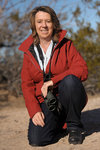Wind: mph,
Welcome to our new web site!
To give our readers a chance to experience all that our new website has to offer, we have made all content freely avaiable, through October 1, 2018.
During this time, print and digital subscribers will not need to log in to view our stories or e-editions.


A New Mexico State University researcher who is part of a group of scientists leading efforts to uncover the unknown force responsible for killing possibly millions of migratory birds across the Southwest believes the deaths may be signaling much graver ecological troubles.
“There’s a major problem,” NMSU Regents Professor Martha Desmond said of the mysterious avian die-off that has baffled researchers for weeks.
The first signs of the die-off came Aug. 20 when officials reported an unusual increase in bird deaths at White Sands Missile Range in southern New Mexico. Then, earlier this month, people began documenting a massive influx of dead birds in areas across the state following a cold-weather system that swept through much of New Mexico.
“A majority of these birds are insectivores, and part of the story is that there probably aren’t enough insects for them to eat,” said Desmond, an ornithologist who teaches in the Department of Fish, Wildlife and Conservation Ecology in the College of Agricultural, Environmental and Consumer Sciences at NMSU. “However, fires across the West may also be contributing to this, forcing the birds to take alternate migratory routes, fly at lower altitudes or physically causing particulate damage to their lungs.”
“This is an alarm,” Desmond added, “that there’s a problem with the health of our ecosystems.”
Desmond is now on a mission with other researchers, including NMSU biology professor Tim Wright, to understand the long-term implications of the bird deaths. The endeavor has grown into a collaboration that includes NMSU, the University of New Mexico, Department of Defense, Los Alamos National Laboratory, and many other state and federal agencies and non-governmental organizations in New Mexico, as well as the Cornell Lab of Ornithology.
Large-scale avian die-offs are rare, but are known to occur in what Desmond described as “sudden, short-duration and intense weather events.”
“In this case, the massive wildfires in the West in part fueled this weather system,” she explained. “But what’s happening here is something different. We had the storm, but we saw a large number of mortalities leading up to it and following it, which indicates that there might be multiple stressors coming together to create the perfect storm.”
Desmond and her research partners are looking at potential stressors that include drought, dehydration and smoke pollution. But they have not yet determined if any of those factors played a role in the birds’ deaths.
The research group’s top priority is determining the birds’ cause of death, Desmond said.
Currently, researchers are awaiting necropsy results from the U.S. Fish and Wildlife Service Forensics Laboratory in Ashland, Ore., where Desmond sent bird samples for additional analysis after her initial evaluation. Since August, she and a graduate student have evaluated more than 500 birds at her NMSU lab and identified as many as 40 different species, including sparrows, western wood peewees and Wilson’s warblers.
“The birds we have collected appear to be in poor condition – probably dehydrated and emaciated. We’ve also seen a wide diversity of birds impacted by this, not just insectivores,” she said. “About 30 percent or more of the birds that are coming in are sparrows – seed eaters.”
Desmond expects to receive the first necropsy results over the next several weeks. Those findings, she said, will aid the group’s research in identifying stressors causing the mortalities. She hopes that they may be able to predict which species are more susceptible to the conditions.
Although the death toll from the recent die-off remains unknown, Desmond and her research partners believe the figure is high enough to cause concern.
“We’re working on calculating a figure,” she said. “At this point, we know it was a lot of birds, and it could be in the hundreds of thousands or millions.”
Recently, Desmond said she was still receiving daily reports of bird mortalities in New Mexico. People in West Texas, southern and central Colorado, Utah and Mexico also reported discovering bird mortalities following the cold front, she added.
Desmond’s primary concern is that this will not be a singular incident.
“With persistent drought conditions and wildfires,” she said, “birds will become more dehydrated and unable to get the insects that they need, and this may be something we’re going to keep on seeing in the future.”
“In this country and North America,” she added, “it’s been estimated that we’ve lost 3 billion birds since 1970. And this is just one more stressor.”
In the meantime, Desmond is asking communities across the state to continue to report and document bird deaths. Community members can submit their findings via the iNaturalist app under the Southwest Avian Mortality Project, she said.
Desmond and her research partners are also in the process of seeking additional funding to continue their work, which includes the development of a new bird-monitoring center called the Southwest Avian Network, or SWAN.
“We have to start thinking about how we can monitor the condition of birds across the state and even outside of the state with different people,” she said. “Right now, this is the priority for everyone, and we have a lot of people working on this.”
Other items that may interest you

